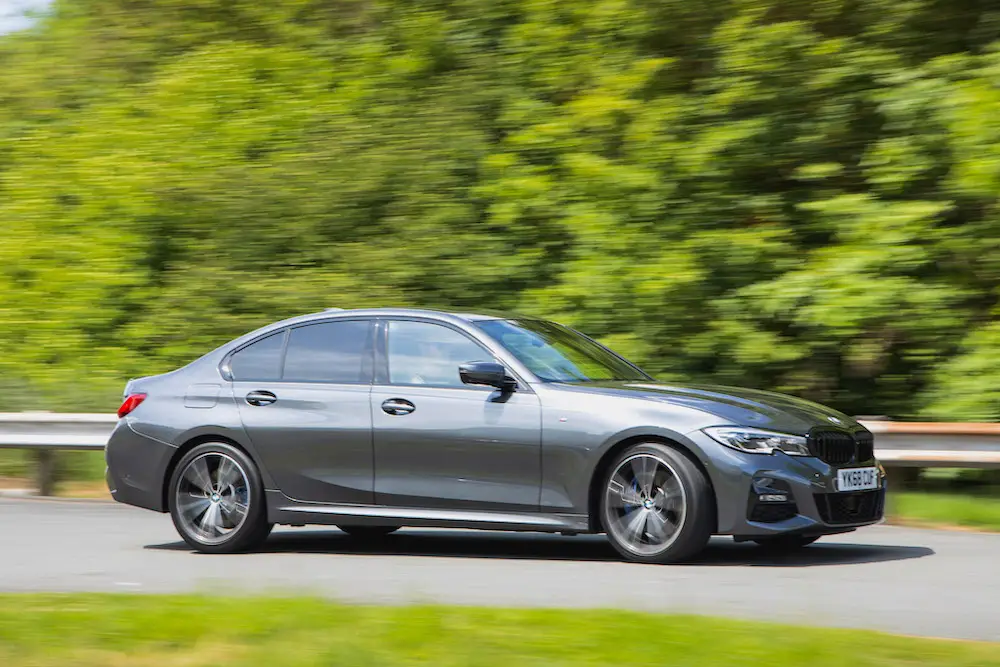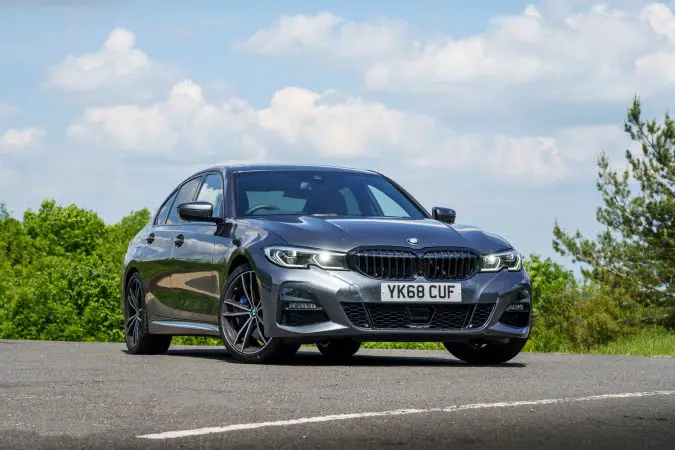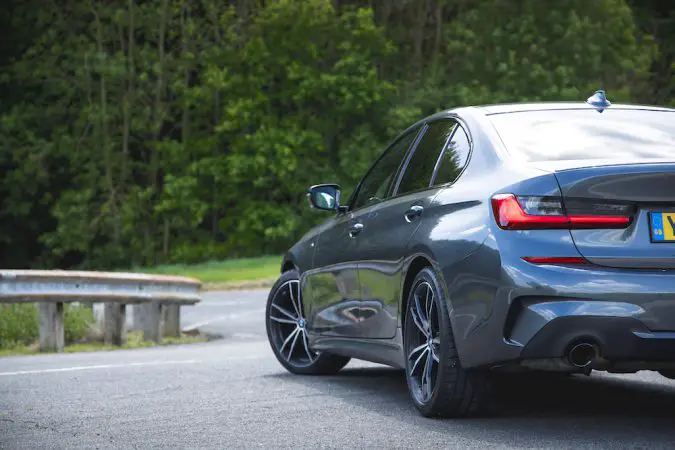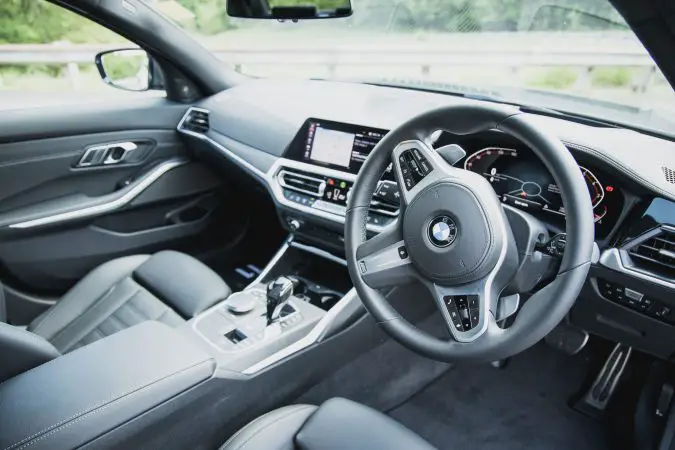The BMW 320i and 328i are members of the luxury sedan family. These family-friendly sedans boast power, performance, and comfort like nothing before. Despite the similarity in their names, these two vehicles have quite a few differences that you may want to consider when making a buying decision. So, what stands out in BMW 320i Vs 328i?
Both cars are excellent. The main differences exist between the engine, interior, and technology. Thanks to the integration of sophisticated technology in these car models, you can access premium features. On that note, both these cars come with turbocharged engines – powerful beasts of the automotive world. The BMW 320i and 328i offer stunning handling in a wide variety of scenarios due to their signature STEPTRONIC automatic transmission system.
Both cars can serve you well. But if you want a more specific answer to what will suit you better: BMW 320i vs. 328i, we got you! This article will contain not only general information about the two but also a handful of comparisons that will help you make a better choice.
BMW 320i Vs 328i: History Of The BMW 3 Series
The BMW 3 Series is amongst the German automaker’s finest automotive endeavors. It became the most popular out of the brand’s lineup since its inception in 1975. Customers who were loyal to the line loved it every generation after the other. In May of 2015, BMW introduced the 6th generation of Series 3. It was a fine testimony of the brand’s longevity and BMW’s ability to incorporate necessary changes and upgrades to meet the demands of fans across the world.
The Original 3 Series
The very first BMW 3 Series brought in a new era of compact sporting vehicles. It successfully replaced the BMW 2002 Coupe. The 1975 E21 hit the North American markets and production started in 1976 with the first cars being finished and sold as the 1977 models. Also called the 320i, this sedan was the only one of its kind made for the American market at that time.
The 320i impressed with its 2.0L 4-cylinder engine. In comparison to the recently decommissioned 02 (also from BMW), the 320i took up significantly more space on the road. The measurements came to 171.5” in length, 63.4” in width, 54.3” in height, and 100.9” of wheelbase. People quickly accepted it as an alternative to the popular BMW 02.
The First Generation: BMW 3 Series E21 (320i)
The 2.0L produced 110 HP and the main hero behind this feat was its Bosch K-Jetronic injectors. As soon as the market had its first E21s, they knew they couldn’t get enough. Naturally, the car picked up dozens of accolades. One of the most notable ones is “The World’s Best Sedan” from a European car magazine.
Sales soared globally and by 1983, the worldwide market for this generation had peaked. More than 1.4 million units had been sold worldwide. Popular members of Series 3 include the 316, 318, 320, and of course, the 320i.
The Second Generation: 1983 BMW 3 Series E30
Through 1991, the E30 enjoyed great success in the United States. It started being sold in 1983. Even before BMW could gauge the popularity of the lineup, the second generation had become a global sensation. The first model to roll off the production line was the BMW 318i E30. It was powered by a 1.8L fuel-injected four-cylinder engine, the car could generate 101 HP.
For that time, BMW had managed to create a vehicle that could go from O to 60 in under 12 seconds – an impressive feat indeed. The German manufacturers were at the top of their game, especially when it came to innovations and styling. Although the new version was twice as pricey as its predecessor, there was a good reason to back it up.
Alterations that changed the aerodynamics and made the body much better came at a cost. But needless to say, they were worth the expense and effort. Similar styling and aesthetics were maintained but the successor managed to steal hearts with its improved agility and strength.
BMW 3 E30 325e
When the BMW 325E came to market in 1988, the vehicle made quite an impact on its larger body. Featuring a 2.7L inline 6-cylinder that produced 121 HP and zoomed to 60 from 0 in under 9 seconds, the 325e was a force to be reckoned with.
This version had 2 doors with 4-wheel antilock disc brakes and a front spoiler.
BMW 325i/is
The 325i/is models were some of the many variants of the BMW 3 series released to the North American region between 1987 to 1991. These retooled engines effortlessly produced 168 HP with 164 lb. ft torque, achieving 60 from 0 in only 7.4 seconds.
The Third Generation: BMW 3 Series E36
From 1991 to 1999, BMW sold its Series 3 E36 models in the US with a new 4-door saloon which would later go on to become the flagship of the lineup. In this generation, several new, important enhancements were made. The third generation laid the foundation for future generations to create a mark on the industry.
The 325i E36’s dolphin-shaped body had a more proportionate design. BMW struck gold with its 50/50 weight distribution in this generation and that became the untold standard for all vehicles from the manufacturers.
For the 3rd generation, a 3.0L engine equipped with a DOHC 34-valve, six-cylinder was positioned in the middle of the auto, the only exception being the entry-level models. As a result, the new cars could reach 189 HP and jump from 0 to 60 in 6.9 seconds. Presented as the coveted 1992 model, the E36 made its entrance into the US market in 1991.
Soon after, the Coupe and Convertible models followed. The variants made during this time include the: 318i, 318ic, 318is, 318ti, 323i, 323ic, 323is, 325i, 325ic, 325is, 328i, 328ic, and 328is.
Some of the technological and design improvements made in this generation would be an upgraded chassis and a new Z axle rear suspension. A smoother ride was the final result, with upgraded handling and tire traction on rough roads.
The Fourth Generation: BMW 3 Series E46
The fourth-generation BMW 3 series was introduced to the American market in 1998 and the lineup continued for eight more years. The new 328i had a larger body than the original E36 and was powered by a 2.8L inline six-cylinder engine that climbed to 193 HP with 206 lb. ft torque. The sedans rolled out a year after the initial launch.
BMW 3 E46 328i
During 1998 – 2006, the BMW E46 was the talk of the town. By this time, the general public had a very positive image of the 3 Series – both in the US and worldwide. A smaller 2.5L inline 6-cylinder engine was added to the 323i which helped the car zoom to 170 HP with 181 lb. ft torque. The overall weight of the vehicle was reduced thanks to the use of aluminum in the engine.
Furthermore, enhancements were made to the dual resonance intake couple models as well as the Double Vanos variable valve timing system. BMW added more variants in 2000. The 328Ci and 323Ci came in coupe models while the 323Ci was a great convertible addition to the lineup. Although the engine remained unchanged in the wagon variant, power upgrades were made to the 323 and 328.
BMW E46 325 And 330
In 2001, BMW introduced the new 323i and it got the name E325i with the powerful 2.5L engine and improved HP output of 184. A newer, bigger, and powerful engine was added to the new 328i: a 3.0L with 225 HP output which the automakers termed the 330i.
The Fifth Generation: BMW 3 Series E90, E91, E92, And E93
The BMW 3 Series got a new generation in 2006. A new look had started being teased since 2002, and it was during this time the 346 eras were visibly running out of steam with a significant change made to the taillights and the front. BMW had declared a new generation by 2006 and in came the BMW E90 3 Series Sedan for the US along with the powerful E91 Sports Wagon.
The E93 3 Series Convertible and the E92 3 Series Coupe – these two cars together ushered the brand into a new age of innovations, upgrades, and styling.
Cosmetic Changes
The overall aesthetics of the BMW 3 Series changed drastically in this era and it gave the cars a more refined and polished look. The longer wheelbase, measuring in at 1.4” longer than the original E46, paired with the 1.2” increase in the tracks’ width made it possible to deliver a more capacious interior to the drivers; not to mention the better sense of balance.
Improvements To The 325i And 330i
All of these models got an upgrade in power as a brand new 3.0L inline 6-cylinder engine was added to their bodies. Just falling short of the 330i, the 325i clocked in at 215 HP output (the 330i got 255 HP). A 3-stage induction system was included as a significant alteration for improving performance. BMW made sure to not fall behind on technology as it added the iDrive system and Active Steering for a more satisfying driving experience.
BMW 335i E93 Hardtop Convertible
Come 2007 BMW had a surprise planned for the automobile industry – the Convertible E93, the first retractable hardtop of that era. The seamless operations and sporty design were a huge hit with dedicated fans. Taking advantage of the Twin Power Turbo technology, BMW introduced the innovation in the 335i model. The result? The hardtop convertible generated an incredible 300 HP and 330 lb. ft torque.
Truly a speedy and sporty addition was made to the family famed for tearing up the test track, capable of going from 0 to 60 mph in 5 seconds. The new convertibles made a name for themselves for their speedy acceleration. It was stylish, trendy, and sexy!
The Sixth Generation: BMW 3 Series F30, F31, And F34
BMW 3 Series got its sixth generation six years after the previous edition. The F30 was equipped with an extended body, a wider backtrack and front, and an extra 2” of wheelbase. The larger appearance of the F30 was surely what caught the attention of the market, apart from the extra space added to the interior for better passenger and driver comfort.
The trunk space was extended by 20 liters with the widened door opening angles. With the F30, BMW owners took a step away from their comfort zone. The car got a revamped engine of 2.0L with three cylinders elevated with Precision Direct Injection and Valvetronic Variable Valve Timing. This got the new examples a rating of 240 HHP and defeat the E90 328i by three seconds with a 0 to 60 mph achievement of merely 5.6 seconds.
The Newest BMW 3 Series
In the most recent market, the BMW 3 series is a reminder of its traditional art motion and innovation. The new 2018 to 2020 models are doing okay in the market. BMW is primarily focusing on efficiency and comfort along with better handling and performance to keep the desirability of the lineup at an all-time high.
It has been a long and glorious journey for the BMW 3 series but they are not at the end just yet. Innovative technology is becoming the standard mode of operation for upgrading new editions.
BMW 320i Vs 328i: What Are The Differences?
Before diving into the differences, we would like to reinstate that both these car models are known and loved for their astounding performance. Even if you are not particularly picky about the differences between them, we suggest you have a rough idea about it to understand which may suit your needs better.
There are some features that one vehicle provides while the other doesn’t. At the end of the day, these small changes make big differences. Here is what can be said about BMW 320i vs. 328i.
BMW 320i Vs 328i: Powertrain
The BMW 320i comes with a big 2.0L TwinPower Turbo engine capable of generating 180 HP at 200 lb. ft torque and 5,000 RPM at more than 1,250 RPM. Based on the driving conditions, the Brake Energy Regeneration and Auto Start-Stop function will turn on to conserve power.
On the other hand, the BMW 328i features a 2.0L turbo engine that produces a peak output of 258 lb. ft torque and 240 HP. Compact yet strong, these engine blocks can work with the STEPTRONIC automatic transmission system featuring 8 gear ratios. A 6-speed manual transmission system is one option for both sedans.
The Driving Dynamics Control allows the driver to have better options for customizing the drive in a BMW 320i. The SPORT mode can optimize the powertrain for fast maneuvers at higher speeds. Make sure to check out this video to understand the proper usage of the modes.
By observing and calibrating many parameters, the Dynamic Traction Control and Dynamic Stability Control keep the 320i sedan perfectly balanced on slippery and curved terrain.
A 5-link rear suspension system stabilizes the car’s chassis on rough or unpaved paths. The twin-tube shock absorbers are pressurized with gas and go into ensuring a smooth and quiet ride in this BMW creation.
BMW 320i Vs 328i: Technology
The HiFi sound system is the standard option when it comes to BMW 320i. It has nine speakers in total including a digital amplifier and two tweeters that blasts a peak output of 205 watts. The audio system is linked to SiriusXM Satellite Radio, HD Radio, and more radio channels.
The BMW 328i, in contrast, is available with a Harman Kardon Sound system and it delivers fantastic acoustics with its impeccable noise-reduction technology. The 328i model can be upgraded with a GPS navigation system that can be controlled by a touchpad instead of the conventional touch screen. Advanced navigation software also received a bump with Destination Guidance; you will never be lost again!
BMW 320i Vs 328i: Interior
Fortunately, the signature SensaTec upholstery can be availed for all seats in a BMW 320i and 328i. Durable yet soft, this material is resistant to abrasion, staining, and general damage that comes with wear and tear over time. The 320i model comes with Advanced Vehicle and Key Memory which allows your preferred settings to be adjusted instantly for the intuitive climate control system, driver’s seat position, audio system, and more.
Various parts of the interior are illuminated by the ambient lighting as soon as you open the door on the driver’s end. Genuine Dakota leather can be used on the 328i sedan. Not to mention other premium materials such as shiny metallic inlays and Ash Grain wood. Both these sedans roll in style with V-spoke alloy wheels.
BMW 320i Vs 328i: Price
When considering the price, decide whether the more expensive one brings value to match the higher price. On average, the BMW 320i costs between $34,000 and $36,000. In comparison, the BMW 328i sells for about $42,000. Does the price variation in BMW 320i vs. 328i make any difference?
If you go for a brand new 320i, you can save about $5,000 on average, compared to the 328i. If you buy a secondhand model, you may get a deal around $3,000 less than how much you could get a 328i for.
BMW 320i Vs 328i: Fuel Economy
The 320i surpasses the fuel economy of its competitor by a thin margin of 1mpg on the highway and in the city. For the 320i, it’s 24 cities and 36 highway whereas, for the 328i, it’s 23 cities and 35 highway. We don’t think the one-mile-per-gallon difference will make that big of a difference when it comes to day-to-day driving.
BMW 320i Vs 328i: Power
The BMW 328i supplies much more than the 320i. Many people love faster cars and the BMW 328i would be the better choice for them.
BMW 320i Vs 328i: Safety Features
Adaptive brake lights are a key feature of the BMW 320i. It comes with more safety features such as automatic headlight control and a brake drying system.
Unique safety features are also introduced to the BMW 328i. This includes a spot detection system and adaptive headlights.
Which Is Better For You? BMW 320i Vs 328i
The BMW 328i offers a handful of extra features. However, the design similarity to the 320i externally might be a turn-off for some. After all, you can only differentiate by checking out the text at the back. If your goal is extra power and you are fine with spending a bit more money, the better option would be the 328i.
In contrast, the 320i offers a slightly deflated version of the 328i engine but brings along all the technological benefits. If you go for the 320i xDrive, you get a stellar all-wheel-drive luxury sedan at a killer price and better mileage per gallon on both the highway and in city traffic.
That was all on BMW 320i vs. 328i. We hope this guide helps you make better decisions.
BMW 320i vs 328i: Which One Is the Better Choice? – Facts
- BMW 320i and 328i are both trim levels of the BMW 3 Series with a few differences in price and interior features. The 320i is the basic trim that costs slightly less than $36,000 while the 328i is almost $6,000 more expensive.
- Both models are equipped with a turbocharged engine and STEPTRONIC automatic transmission, but the 328i has a more powerful engine with maximum outputs of 240hp and 258 pound-feet of torque, compared to the 180hp and 200 pound-feet of torque of the 320i.
- The 320i has a slightly better fuel economy compared to the 328i, with one mile more mileage in both city and highway driving.
- The 320i is equipped with a premium Hi-Fi sound system, while the 328i has a Harman Kardon audio system with noise-reducing features and advanced GPS navigation with a touchpad.
- Both models feature SensaTec upholstery and Advanced Vehicle & Key Memory that remembers your preferred settings.
- The 328i model is up for several customizing options including original Dakota leather, shiny metallic inlays, and Ash Grain wood.
- Both models have the option for a six-speed manual gearbox.
- The BMW 320i is a practical family sedan that provides great value for its price, while the 328i is a better choice if you want extra horsepower and advanced features and if budget is not a problem.
- Both models are optimized for yielding sporty performance on the road.
- The article suggests that it’s better to be aware of the strong points of both models before deciding which one makes more practical and financial sense for you.
FAQ
Here are some popular FAQs:
1. How Reliable Is A BMW 328i?
The BMW 328i got a 2.5 out of 5 on the reliability index. This places it in the 30th position out of a total of 32. A second-hand 328i may offer a huge discount on the original price but there is baggage as well. You may have to repair extra issues, increasing total ownership cost. The average cost of repair for this model is $750 and changes based on age, mileage, and problem you are facing.
2. How Reliable Is A BMW 320i?
The BMW 320i received three stars out of 5 from J.D. Power, making it slightly more reliable than its competitors. Despite being an entry-level sedan in its sector, the 320i can last for up to 150,000 to 200,000 miles if maintained and serviced properly.
3. Do BMW 320i And 328i Both Come With The xDrive Package Option?
The xDrive package option can be added to both the BMW 320i and 328i. Due to the AWD intelligent systems in BMW vehicles, you can drive safely on slippery roads and colder climates.
Keep in mind that adding a BMW xDrive package can hike up the final price. For the price, you get extra safety features plus quicker acceleration from 0 to 20 mph. Your tires are also less likely to turn without friction when there is proper disbursement of power.




